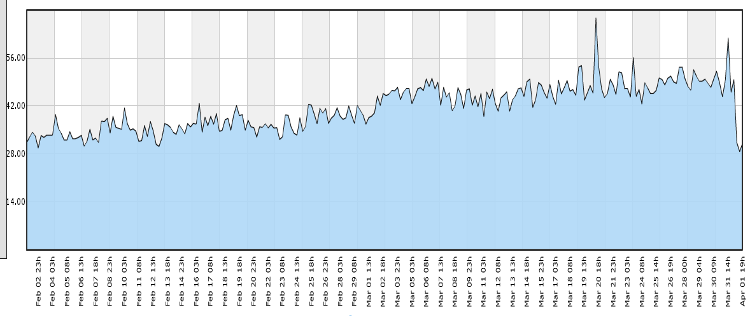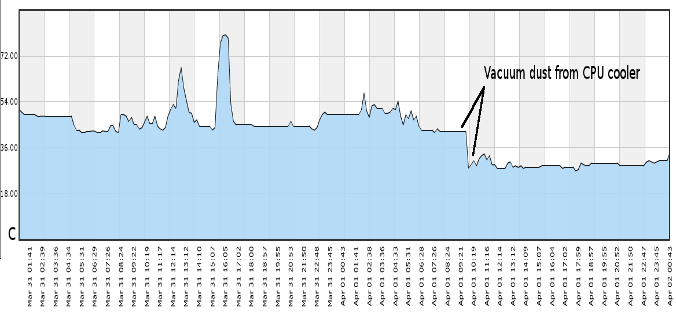I’ve always been loathe to clean the insides of computers but then I have spent most of my life with systems in machine rooms with filtered air. Taking machines down to remove dust bunnies makes no sense in a carrier-grade environment where you prevent dust in the first place and you do anything to protect uptime. The retail-domestic environment is rather different. You can’t filter dust unless you exclude humans and pets as dust is for the most part bits of human i.e. skin that we slough off, as well as dirt, hair and pet fur. Yes, dust is PEOPLE !
So what evidence do I have that it can make a difference ? I now try and log CPU and hard disk temperatures for any machine I manage to my central Pandora FMS system. Microsoft Windows is very poor in exposing the CPU temperature sensors with no proper support at all via WMI so you must rely on 3rd party programs of which few have a command line interface to allow cron-like collection and central logging. GNU/Linux machines on the other hand have the lm-sensors package and that generally works for all modern machines and gives a command-line access to the CPU temperatures (use the hddtemp package for hard disks). Here is a graph of a Ubuntu 11.04 based server we have in a kitchen environment,

About 3 months ago the average CPU temperature was about 30 degrees C (86 F) but this has trended up and was now about 44 degrees C (111 F) when idle. So for a spring-clean I decided to open the case and clean it out. There wasn’t a massive amount of dust but the AMD stock cooler vanes were clogged. Just used a vacuum cleaner to suck up the dust. Hold the CPU cooler fan to stop it from manically spinning around and just put the vacuum cleaner on maximum and pass over the cooler fan. The dust should slowly suck out.

As you can see it made a dramatic change to the CPU temp with a 14 degree C drop (about 25 F drop). This is now the 3rd retail-domestic machine that I have cleaned and observed the side-effects and it is certainly worthwhile as long as you have recorded the CPU temperature over time to give yourself (and the client) the objective evidence that this is a necessary job.
